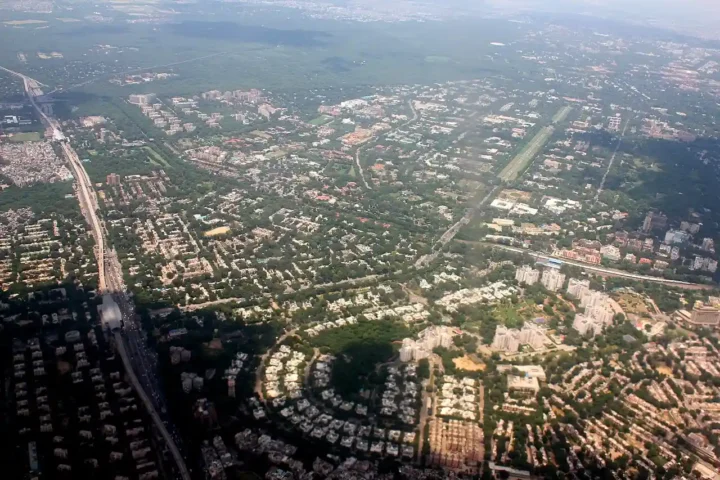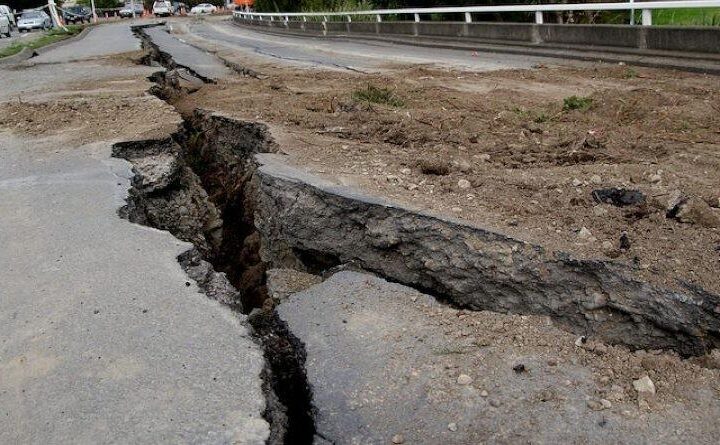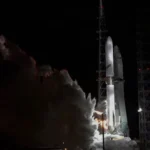Arizona photographer Andrew McCarthy has captured a once-in-a-lifetime image showing the International Space Station (ISS) silhouetted against the Sun at the exact moment a powerful solar flare erupted. The stunning photo, named “Kardashev Dreams,” has quickly gained popularity online.
McCarthy took the remarkable shot on June 15, 2025, while enduring extreme desert heat. His car’s thermometer registered 121°F while his camera equipment recorded temperatures reaching 129°F in the Sonoran Desert.
“This is by far the best solar transit photo I have taken,” McCarthy shared on social media. “While waiting for the ISS to transit the Sun, a sunspot group started flaring, leading to this once-in-a-lifetime shot.”
The image captures the space station passing in front of the Sun during a brief transit lasting less than a second. What makes the photo extraordinary is the M8.4-class solar flare erupting from the Sun’s surface at that precise moment. The flare came from Active Region 4114, peaking at 18:25 UTC on June 15.
Despite appearing close in the photo, the ISS was in no danger from the solar flare. The space station orbits Earth at about 250 miles (400 kilometers) above the surface, traveling at roughly 17,500 mph (28,000 km/h). It completes a full orbit around Earth every 90 minutes.
Similar Posts
To get this perfect shot, McCarthy needed careful planning and specialized equipment. He used tools like ISS Transit Finder to determine the exact location and timing for the photo opportunity. His setup included an Espirit 150 telescope and an Apollo-M Max camera, both modified for safe solar viewing.
“To mitigate the effects of the heat, I brought ice packs and thermoelectric coolers to help keep the telescopes and computers from overheating,” McCarthy explained.
The final image is a composite created from tens of thousands of individual photos. McCarthy stacked these frames to reduce noise and enhance detail, then continued shooting after the transit to create a full solar disk image with extreme clarity.
McCarthy named his photo “Kardashev Dreams” after Soviet astronomer Nikolai Kardashev’s scale that measures technological advancement of civilizations based on energy use. The title represents “our first steps to being a much greater civilization,” according to McCarthy.
The timing of this photo coincides with a period of high solar activity. The Sun is currently in the solar maximum phase of Solar Cycle 25, with recent months showing the most intense solar activity since 2002. This increased activity makes solar flares more common but doesn’t make McCarthy’s timing any less remarkable.
Social media users have responded enthusiastically to the image. “This gotta win an award. Where can I vote?” commented one user. Another observed, “The average person will look at this photo and be like that’s awesome but most have no idea how much time effort and planning it took to capture this.”
When asked by a follower how he managed to focus on objects at vastly different distances, McCarthy explained, “They’re both infinity to the camera. After a few miles everything is, depth of field only applies for close distances while there’s still parallax.”
For anyone inspired to try similar photography, proper solar filters are absolutely essential. Looking at the Sun without specialized protection, even briefly, can cause permanent eye damage.

McCarthy’s image showcases how dedicated amateur astrophotographers with the right equipment can now capture astronomical events that were once only possible for professional observatories. His “Kardashev Dreams” photo stands as a striking example of perfect timing, technical skill, and cosmic luck coming together in a single frame.
The photo can be viewed on McCarthy’s social media accounts, where he regularly shares his detailed astronomical images. For those interested in the science behind such events, NASA’s tracking systems provide valuable information about solar activity and its effects.


















